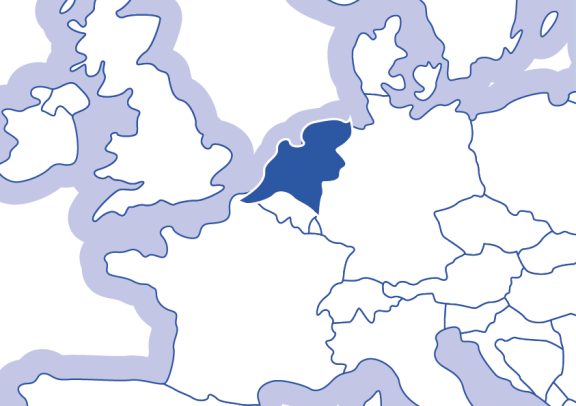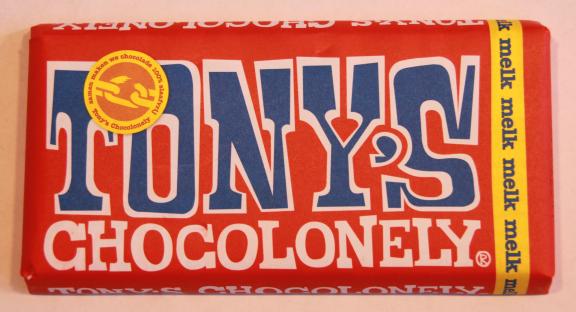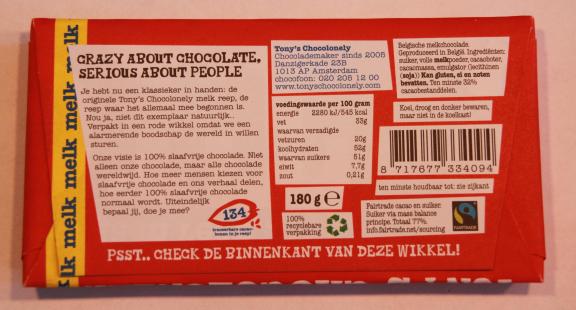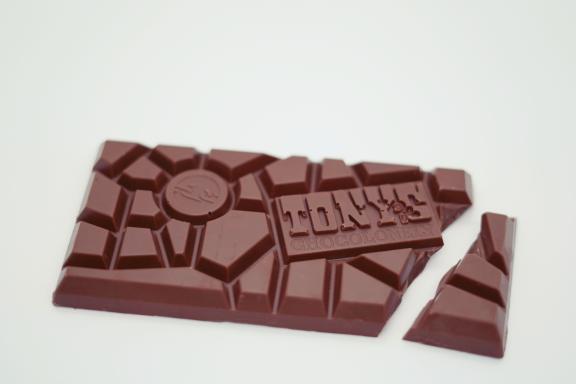
The Dutch market potential for cocoa
The Netherlands is Europe’s largest importer of cocoa beans, paste, butter and powder. Cocoa and cocoa products imported into the Netherlands account for 20–25% of the cocoa traded globally. A large share of the cocoa beans and products stay in the Netherlands for making chocolate, but most of the chocolate produced in the Netherlands is exported. Sustainability and certification are important on the Dutch chocolate market.
Contents of this page
1. Country description
The Netherlands is a European country with a population of 17.6 million, which making it the 72nd largest in the world. Despite its small population, the Netherlands has the world’s 18th largest Gross Domestic Product (GDP). The Port of Rotterdam is the largest seaport in Europe, but it is not the main port for cocoa imports. The Port of Amsterdam is the key port for cocoa. Together with Zaanstad, the Port of Amsterdam is the largest cocoa cluster in the world.
Cocoa and cocoa products imported into the Netherlands account for 20–25% of the cocoa traded globally. Annual chocolate consumption was 4.5 kg per capita in 2018.
Figure 1: The Netherlands is a country in Western Europe

Source: design by Bart Wortel
This study focuses on the Dutch market for import of cocoa beans, cocoa paste, butter and powder (HS codes 1801, 1803, 1804 and 1805).
2. What makes the Netherlands an interesting market for cocoa?
The Netherlands is Europe’s largest importer of cocoa beans, paste, butter and powder. Cocoa arrives in the Port of Amsterdam in bulk shipments of up to 23,000 tonnes. The Netherlands also has a large processing industry, with some of the largest warehouses, processing and manufacturing facilities in the world. Most of the cocoa that enters the Netherlands is re-exported, either as cocoa beans, cocoa derivatives or as the final product. These factors make the Netherlands one of the most important cocoa hubs in the world.
The Netherlands is Europe’s largest importer of cocoa beans
The Netherlands is the world’s largest importer of cocoa beans. Many cocoa and chocolate companies are based around the Port of Amsterdam, where the cocoa enters the Netherlands. Large importers in the Netherlands are Ofi, Cargill and Ecom. Daarnhouwer is an example of a Dutch cocoa trader.
Examples of companies that specialise in the storage of cocoa beans in the Port of Amsterdam area are Commodity Centre Netherlands, CJ Hendriks group, Cotterell, C. Steinweg Group, CWT Commodities, Dutch Cocoa BV, Katoen Natie and Vollers. These can also be found on the Port of Amsterdam website.
In 2022, the Netherlands imported 761,000 tonnes of beans from producing countries. This was 45% of the total volume of beans imported from producing countries into Europe. This percentage was even higher in 2018, when the Netherlands imported 58% of Europe’s total volume of cocoa beans from producing countries.
Bean imports decreased 8% per year from 2018 to 2022. Most of this decrease happened from 2019 to 2020, when total bean imports decreased by 30%. This decrease happened partly because of lower demand due to the COVID-19 pandemic and the start of the 400 USD Living Income Differential (LID) for cocoa from Côte d’Ivoire and Ghana. The imports have stayed at this lower level since then (2020–2022). However, the Netherlands is still the largest importer of cocoa beans in Europe, even after this decrease. 98% of the beans imported into the Netherlands came from producing countries in 2022.
Source: Eurostat and Trade Map 2023
Since almost two-thirds of cocoa beans imported into the Netherlands come from Côte d’Ivoire and Ghana, these countries were affected the most by the decrease in bean imports. Together, they accounted for 95% of the total decrease in volume between 2018 and 2022. All other producing countries combined accounted for the remaining 5% decrease in import volume.
Source: Eurostat and Trade Map 2023
Total bean imports are expected to remain around this volume for the coming years, since this is around the current maximum storage capacity in the Zaanstreek. For producers and exporters, this means the most recent data (2020–2022) should be considered. This means that Côte d’Ivoire and Ghana have lost some volume but, as the largest producing countries in the world, they are expected to remain the key import countries for the Netherlands.
The Netherlands is Europe’s largest importer of paste, butter and powder
The Netherlands is also Europe’s largest importer of cocoa paste, cocoa butter and cocoa powder from producing countries. The total volume of paste imported from producing countries in 2022 was 130,000 tonnes, the volume of butter was 98,000 tonnes, and the volume of powder was 47,000 tonnes.
Imports of paste and butter increased slightly between 2018 and 2022. The import of cocoa paste from producing countries increased by an average of 3% annually from 2018 to 2022, and the import of butter by 6%. Powder imports from producing countries decreased by an average of 2% annually from 2018 to 2022. Powder imports decreased by 24% from 2020 to 2021, but increased again by 25% the next year, so the overall change is only small when comparing 2018 to 2022.
While some European countries mostly import paste, butter and powder from other European countries, most of the products imported into the Netherlands come from producing countries. This was the case for 90% of cocoa paste, 87% of cocoa butter and 64% of cocoa powder imported to the Netherlands in 2022. This makes the Netherlands an interesting market for exporters and producers of these products, since producing countries are the main source of Dutch imports of paste, butter and powder.
Source: Eurostat 2023
The total volume of paste, butter and powder imported by the Netherlands is significantly larger than imports for any other European country. This is especially the case for powder. In 2022, the Netherlands was responsible for 86% of all European powder imports from producing countries. Dutch imports of cocoa paste from producing countries totalled 39% of all European imports, and for butter the share was 37% of all butter imports from producing countries. This makes the Netherlands the key country for exporters to focus on when exporting paste, butter and powder.
Source: Eurostat and Trade Map 2023
The Netherlands is a major trade hub for beans, paste, butter and powder
Most of the cocoa beans and derivatives that enter the Netherlands are re-exported. The Netherlands is Europe’s second-largest exporter of cocoa beans, exporting 143,000 tonnes in 2022. After a large drop from 2018 to 2019, Dutch re-exports slowly started to increase again in 2019.
Source: Eurostat 2023
The Netherlands is the world’s market leader for cocoa powder exports, with an export share of about 35%. It is mainly exported to the United States, Germany, Spain, Russia, Belgium and France. The Netherlands is also one of the most important exporters of cocoa butter. The Netherlands exports more paste, butter and powder than it imports, which is due to its large bean imports and large processing capacity for beans to derivatives. This can be seen in the figure below.
Total paste exports were slightly larger than total imports in 2022 (over 11,000 tonnes more). Butter exports were significantly larger than imports (by 180,000 tonnes), as were powder exports(by 52,000 tonnes).
Source: Eurostat 2023
This makes the Netherlands an interesting market for exporters of cocoa paste, butter and powder. It is also a key competitor if you are exporting these products to other countries. Exporters should also consider that much of the paste, butter or powder exported to the Netherlands is likely re-exported to other European countries. Export of these product to the Netherlands therefore does not necessarily mean that your product will be sold on the Dutch consumer market.
The Netherlands is a processing hub
Most of the cocoa beans imported into the Netherlands remain in the Netherlands for further processing. This is due to the large processing capacity of the Netherlands. In 2022, only 25% of the beans were re-exported as beans. Most of the re-exported beans are exported to Germany (77%), followed by Austria (6%) and Italy (4%). After considering bean re-exports, the Netherlands is still the largest net bean importer in Europe, with 582,000 tonnes of total bean imports staying in the Netherlands in 2022.
The Netherlands is the world’s second largest grinder after Côte d’Ivoire. Grinding in the Netherlands has stayed relatively consistent, increasing from 600,000 tonnes in 2018/19 to a forecasted 620,000 tonnes in 2022/23 according to ICCO.
The Dutch cocoa grinding industry is located near the Port of Amsterdam. Multinationals like Ofi and Cargill are based there, as are Dutch Cocoa, Tulip Cocoa and Theobroma, which are part of ECOM Group. These companies play an important role in importing and manufacturing cocoa derivatives.
Cocoa-grinding activities at origin are increasing. Countries such as Côte d’Ivoire have tried to encourage multinationals to invest in local processing, for example with tax benefits. The goal of these investments is to add more value at origin and protect the economy from changes in the global market. Many multinationals have increased their grinding in producing countries to lower production costs. Côte d’Ivoire has continued to invest in grinding and has passed the Netherlands as the largest grinder in the world.
Read the CBI study on Cocoa Market Outlook and Statistics for more information about grinding in origin.
The Netherlands has a large chocolate industry
The Netherlands has a large chocolate production industry. Most of the chocolate production is exported to other countries. Exports of Dutch chocolate are forecast to reach 2.4 billion USD by 2026, which is a 1.7% increase from 2021. The main destinations for chocolate export from the Netherlands are Germany, France, Belgium, the United Kingdom and Spain.
Most of the chocolate manufactured in the Netherlands is considered mainstream chocolate. This chocolate is of average quality and manufactured using bulk cocoa. Bulk cocoa is of standard quality and traded in high volumes on the commodity market. It follows international prices set in the London and New York futures markets.
The main import county for the Netherlands is Côte d’Ivoire, which supplies 42% of the beans, followed by Cameroon (20%), Nigeria (12%), Ghana (11%) and Ecuador (3%). A large share of these imported beans are lower quality, bulk cocoa beans.
Only a very small share of chocolate produced in the Netherlands is sold in the Netherlands. According to the Dutch Initiative on Sustainable Cocoa (DISCO), only 4% of the 2020 cocoa volumes reported by its members were used for the Dutch consumer market. This means that 96% of the cocoa from these companies ends up in other markets, as beans, cocoa derivatives or chocolate products. Since DISCO members represent about 72% of the national cocoa market, the overall percentage of Dutch cocoa import consumed in the Dutch market will likely be close to 4% too.
However, since the Netherlands is Europe’s largest cocoa importer, this 4% still represents a sizeable market share. Chocolate sales in the Netherlands were valued at 945 million EUR in 2021, and sales increased by 16% between 2013 and 2021. Chocolate consumption even increased during the COVID-19 pandemic.
Chocolate bars are especially popular in the Netherlands, of which sales increased by 20% between 2013 and 2018. The local Dutch chocolate market is growing. A growing number of small chocolatiers are starting up, increasing by 29% between 2017 and 2022. The retail price of chocolate increased a lot in 2023 (an increase of 21% compared to a year earlier). This increase in price could affect the growth of future sales.
Tips:
- Use the translation function in your web browser to read website links in this study in your own language.
- Study the Netherlands’ key export markets. A quarter of the beans imported in the Netherlands are re-exported. These beans are mainly shipped to Germany (77%). See our study about the demand for cocoa on the European market for more detailed information about the European trade in cocoa beans and our country study on Germany for more information about the German cocoa market.
- See the website of the Association of the Dutch Sugar Confectionery, Biscuits, Chocolate and Savoury Snacks Industry (VBZ) for more information about the chocolate industry in the Netherlands.
- Access the European Commission’s Trade Department website to learn more about the EU’s trade policy and trade relations with the rest of the world. The Access2Markets page has useful information to help exporters from producing countries with import into the EU. By searching for cocoa with the search bar at the top, you can find the latest news and developments for cocoa imports.
3. Which cocoa products offer the most opportunities for the Netherlands?
The Netherlands is a key market for export of bulk or mainstream cocoa. This is the case for both cocoa beans and derivatives. There is also high demand for certified cocoa. Almost all private label chocolate in the Dutch supermarkets is certified, and many brands also use certified cocoa.
The Netherlands is an interesting market for export of beans and cocoa products for mainstream chocolate
Exporting to the Netherlands is most interesting for exporters of bulk, mainstream cocoa beans. These beans are used to produce mainstream chocolate, which is mostly exported to other European countries. The Netherlands is also an interesting country for exporters of semi-finished products, since these are also used to produce chocolate in the Netherlands.
If it is important to exporters that your cocoa is consumed on the Dutch market, then you should be aware that most cocoa exported to the Netherlands will most likely not end up on the Dutch market. Most exporters will have no control over whether their cocoa is consumed as a final product in the Netherlands or in other countries.
There is strong demand for certified cocoa
The Netherlands is a large market for Rainforest Alliance certified cocoa. In 2022, the Netherlands imported more Rainforest Alliance cocoa than any other country, at 272,000 tonnes. There were 112 companies registered with Rainforest Alliance in the Netherlands, third place behind Germany and Italy.
Note that the Rainforest Alliance and UTZ merged in 2018. However, UTZ certified cocoa was still available for several years after that, during the roll-out of the 2020 Rainforest Alliance certification programme and because of the challenge of transitioning certificate holders to the new standard. By 2022, all cocoa certificate holders transitioned from UTZ to Rainforest Alliance, so UTZ cocoa will no longer be available. Since UTZ was a Dutch organisation, many companies in the Netherlands have a long history with the programme. Many of these now source Rainforest Alliance certified cocoa.
The Netherlands is also a strong market for Fairtrade cocoa. Fairtrade cocoa sales in the Netherlands increased by 8% from 2021 to 2022. Certified cocoa sales increased with new commitments from several brands sold in the Netherlands, including Ben & Jerry’s (owned by Unilever), Guylian (a Belgian brand) and the retailers PLUS and Action.
Private label chocolate products sold at retailers are almost all certified. 100% of the cocoa bought by Retail and Small Manufacturers members of DISCO is certified. The four DISCO members in this category in 2023 were Albert Heijn, Jumbo, Superunie (with members Dekamarkt, Sligro, Hoogvliet, Vomar, Spar, Nettorama, Plus, Boni, Jan Linders, Boon, Coop, Dirk and Poiesz) and Friesland Campina. This was mostly with Rainforest Alliance (84% of all products), with the remainder being Fairtrade certified. Only 1% of these were also organic certified.
While organic certification is still a niche market for the chocolate industry, it is becoming more important in the food industry in general. The Netherlands is Europe’s tenth-largest organic market, with organic retail sales amounting to 1.4 billion EUR in 2021. Organic food retail sales grew by an 6% per year on average from 2017 to 2021, while per capita consumption grew by an average of 5%. The Dutch organic market is expected to keep growing. Examples of Dutch organic chocolate brands include Chocolatemakers and Lovechock.
Read more about how to join certification schemes in our study on Exporting certified cocoa to Europe.
High quality cocoa is interesting for specialty bean-to-bar chocolate
The specialty or premium cocoa market is a small but growing segment. Many of these brands are bean-to-bar, meaning that the cocoa in the final product is linked to a specific producer or farmer group. Many companies in this segment already have established supply chains. This makes it difficult for producers and exporters to become part of those supply chains.
Some small brands may be looking to expand, and this could be an opportunity for producers and exporters. There may also be new companies looking to set up direct supply chains, which could be another opportunity.
Read our product study on Specialty Cocoa for more information about this segment.
Tips:
- The most effective way to access the Dutch market is to connect with the supply chains of large multinational traders and processors, such as Cargill, Ofi, ECOM and Barry Callebaut. These companies own a large share of the Dutch import market. Speak with potential buyers about the supply chains they can sell through. Read more about these companies in our study Entering the Dutch market for cocoa.
- There is a large and increasing demand for certified cocoa in the Netherlands. Use the Rainforest Alliance certificate database to search for certified companies as potential buyers. Use the filters on the left to filter on the Netherlands and cocoa. Check the Fairtrade Netherlands website for Fairtrade and organic certified chocolate companies in the Netherlands.
- Research small specialty cocoa brands in the Netherlands. Read our study on entering the Dutch market for cocoa for more details.
4. Which trends offer opportunities or pose threats on the cocoa market in the Netherlands?
The Dutch are moderate chocolate consumers, although they show a growing interest in healthy snacking, high-quality chocolate and new flavour combinations. The Dutch market’s focus on sustainability is growing too.
Sustainability is on the rise, while certification has become mainstream
Dutch consumers are becoming more conscious about sustainability issues. More than half of Dutch consumers visit shops because they are socially or environmentally conscious. Demand for sustainability-conscious chocolate is also increasing.
As a result, the market for cocoa that is certified or part of a company sustainability scheme is increasing. This increase started in 2010, when stakeholders committed to 100% consumption of sustainably produced cocoa by 2025. This led to a significant increase in certified cocoa since 2010.
This is stimulated further by the Dutch initiative for Sustainable Cocoa DISCO, which started in 2020. DISCO is a partnership of companies, public sector organisations and civil society organisations active in the Dutch cocoa and chocolate sector. Their scope encompasses all cocoa and cocoa products imported into the Netherlands. This includes imported beans processed in the Netherlands and exported as cocoa paste, butter, powder, couverture and chocolate to other EU countries.
The share of cocoa that is part of a corporate sustainability scheme is also growing. This includes company programmes from brands like Mondelez Cocoa Life and Nestlé Cocoa Plan, as well as traders and processors like Barry Callebaut’s Cocoa Horizons, Puratos Cacao Trace and Cargill Cocoa Promise. Our study on Entering the European market for Multi-certified coffee explains the difference between company-led sustainability schemes and certification schemes in more detail. The study focuses on coffee, but the situation is similar for cocoa.
For exporters, this could mean extra opportunities to sell you cocoa if it is certified or part of a company sustainability scheme. The decision to join a corporate sustainability scheme is market driven. This means that cocoa producers should only join a corporate sustainability scheme (a company programme) if they have confirmed demand with the buyer of that programme.
Sustainability stories help cocoa producers link with Dutch chocolate brands
Storytelling is a way to communicate clearly about your product and get the attention of your audience. Storytelling makes the buyers of the products feel more connected to the company behind the product. These stories should be accurate, authentic and appealing. They can be used to link the consumers with the producers of the cocoa that is in the final product. As such, there should be a direct link between the final product and the producers.
Most of the chocolate produced in the Netherlands is exported. This makes it difficult for exporters and producers to link their sustainability story to a specific brand in the Netherlands. For storytelling, the best products to focus on are the products (predominantly) sold on the Dutch market. This could give an exporter or producer the chance to build a direct relationship with long-term benefits.
It is also possible to form these relationships through other sector stakeholders. One example is the Cocoa Origins programme of IDH (2017–2022). As part of this programme, eight companies invested in establishing commercial relationships between cocoa producers and cocoa users. They also wanted to improve sustainability at the farm and community levels. The cocoa was directly linked to the Dutch market. The report provides examples that may be useful for producers and exporters.
One example of a Dutch brand that has tapped into this trend is Tony’s Chocolonely. Their message is clear: make 100% slave free the norm in chocolate. Tony’s Chocolonely explains the issue and what they are doing about it in many ways. The Open Chain logo on the outside of the chocolate includes their mission, and the inside of the wrapper explains this mission in more detail. The message is even told through the chocolate itself. The pieces are all a different size, representing the unfair distribution of wealth in the cocoa sector. These stories are linked to the producers of the cocoa, which Tony’s also communicates about on their website and in their annual FAIR report.
Figure 8: Tony’s Chocolonely chocolate product, information on the back and chocolate bar



Source: Long Run Sustainability (1 and 2) and Photo by Babs Gorniak on Unsplash (3)
Another example is Chocolate Makers. One unique aspect of their product is that they ship their beans from the Dominican Republic using only wind power. For more information about how to use storytelling for sustainability, read our study on tips to become socially responsible in cocoa.
Dutch consumers increasingly buy high-quality chocolate
There is increasing demand for high-quality and dark chocolate on the Dutch consumer market, for which consumers are willing to pay higher prices. Dutch consumers are increasingly looking for healthier products. The confectionery industry is responding to this trend by increasingly using natural sweeteners in chocolate (e.g. stevia and agave).
There is also an increasing demand for vegan or raw chocolate, dark chocolate and chocolate products with ingredients that are perceived as healthy. Kumasi Drinks is a Dutch soft drink made from the tropical fruit juice of the cocoa pulp, with no added sugars. Another example is chocolate with matcha. The Netherlands was one of the first markets in Europe were Nestlé introduced its KitKat Green Tea Matcha chocolate in 2019. Shrinrin Tea also sells Macha chocolate in the Netherlands.
One example of a brand from a producing country that has successfully tapped into these trends is Paccari from Ecuador. Paccari is a value-driven brand with a strong focus on sustainability. They work directly with small-scale farmers and pay them fairly. Paccari tells their story in a captivating way, illustrated with pictures. The chocolate is produced from tree to bar and shipped to many countries around the world.
Tips:
- If you can sell cocoa with sustainability aspects then this could give you access to more or different buyers in the Netherlands. For examples of companies with sustainability commitments, take a look at the list of companies that are members of the Dutch Initiative on Sustainable Cocoa (DISCO). These companies may be more interested in cocoa that meets social and environmental sustainability requirements or more information about how to tell your story, read our study on 9 tips to become more socially responsible in the cocoa sector.
- Monitor the yearly import volumes to the Netherlands. Changes in import volumes could mean that the Netherlands starts importing more cocoa from other countries. This affect how attractive your cocoa are on the Dutch market. Look into why import volumes change. This could be due to lower supply, but it could also mean that demand is changing (based on quality, specifications, requirements and other attributes). Read our study Market Outlook and Statistics in cocoa for more information about market dynamics.
Molgo Research carried out this study in partnership with Long Run Sustainability and Amonarmah Consults on behalf of CBI.
Please review our market information disclaimer.
Search
Enter search terms to find market research
